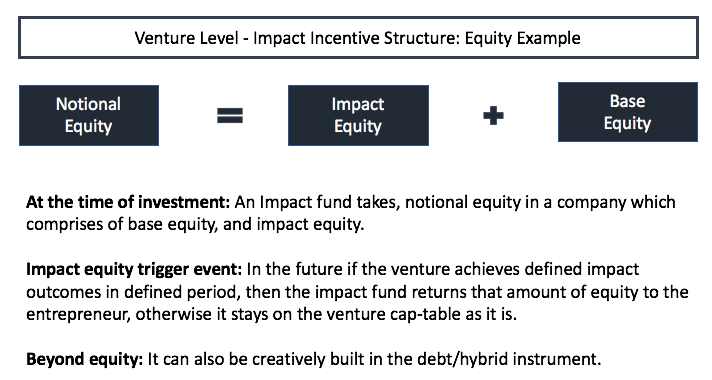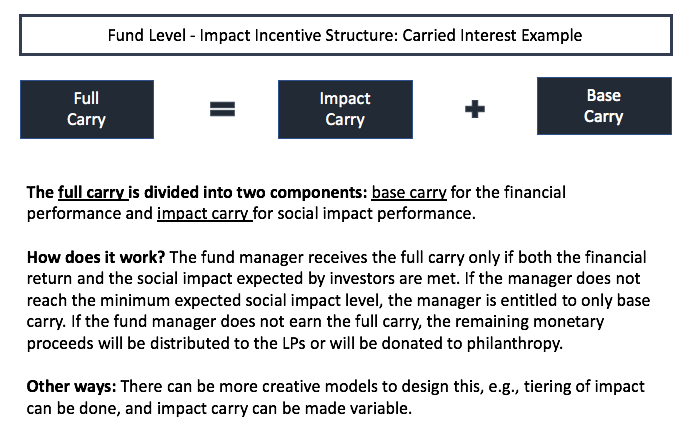“In a new and growing market like impact investing, it is important to ensure maximum alignment of interests among all players involved in its development. ... I believe it is time to link the compensation of managers to social impact, the same way it is linked to financial return, to guarantee that everyone is truly accountable for delivering all the promises that impact investing is making.” - Daniel Izzo, Vox Capital
Have you used the game theory and behavioral sciences principles while investing?
I am sure you must have seen and come across the alignment of incentives between the investor and the investee, linked to the financial performance. In the context of impact investing, an investee promises both financial and social returns to the investors, yet profits are still traditionally tied only to financial performance. This traditional return structure leaves out financial incentives for the investees to meet the stated social impact objectives. It has created industry-wide ramifications and will reshape the future of impact investing in negative ways if not addressed immediately.
What are impact incentives? How to create one?
I believe both entrepreneurs and fund managers should be held accountable for achieving predetermined and measurable impact goals, via their compensation or return structures (i.e., for a fund manager - it is carried interest, and for an entrepreneur - it is equity).
So, by aligning the reward structures with creating impact is what I call an impact incentive structure. These kinds of incentive structures are in place to incentivize the impact performance of the entrepreneurs and the fund managers. These impact incentives are similar to pay-for-success models.
Venture level: between the fund manager & the entrepreneur
We can create a financing structure that incentivizes and disincentivizes entrepreneurs to create impact. If a venture achieves specific, quantifiable impact goals, e.g., a predetermined number of women beneficiaries impacted. The fund returns a portion of the equity or interest to the venture; lets that portion of the stake is 'impact equity.'
Fund level: between the LPs & the fund manager
Similar to the venture-level impact-incentive-structure can be extrapolated to the LP-fund manager relationship, i.e., by tying a portion of fund-manager compensation (i.e., carried interest) to the impact performance of the fund.
Take the next step, as a fund manager and entrepreneur, consider ways in which your reward structure can be tied to impact. If you don't do it, be prepared to explain why.
Curated resources:
[Case Study]: Impact Based Incentive Structures: Aligning Fund Manager Compensation with Social and Environmental Performance
[Case Study]: Tying Fund Manager Compensation to Impact
[Case Study]: Innovations in Financing Structures For Impact Enterprises
[White-Paper]: Social Impact Incentives (SIINC)
[Research]: Contracting for impact: embedding social and environmental impact goals into loan agreements
[Tool]: Impact Terms - A free curated library of innovations in impact investing terms and investment structures, available to entrepreneurs, investors and impact professionals
I am continuously looking for first-time funds and first-time fund managers, that are looking to create their first-time impact funds with an edge or a differentiated value proposition in emerging economies. If you are building one, please do write to me. I would love to learn more from you and would be happy to help in any way.
With Love,
Sagar
About
"first followers" is founded by Sagar Tandon, a founding member at Moonshot Ventures and venture affiliate at MIT D-Lab. You can reach him at sagar@moonshotventures.org.
Occasionally, he blogs about the responsible investing, tech for good, venture capital, investment thesis, conscious capitalism, collaborative consumption, community, and humane lifestyle.





